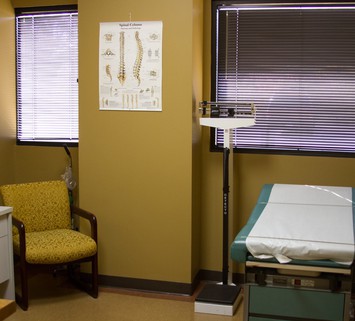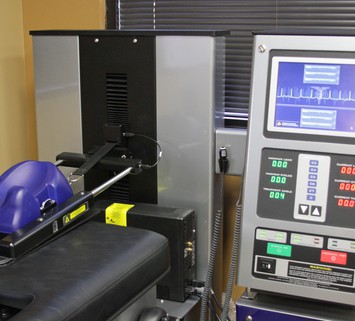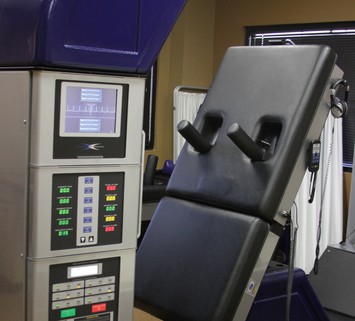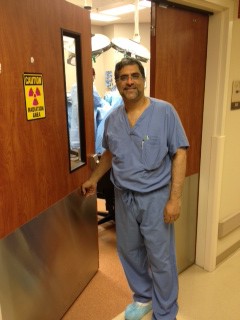Kyphoplasty and vertebroplasty are both minimally invasive procedures that help preserve the spinal column’s integrity and height. Patients typically need one of these two surgeries when their spinal columns have suffered vertebral compression fractures. While relatively new, these procedures have had impressive results which has made them common practice in the world of pain relief.
Many patients don’t understand the differences between a kyphoplasty vs. a vertebroplasty. That’s why the team at Texas Spine Center has put together a comprehensive guide down below so you can better understand these pain relief treatment options.
Kyphoplasty
A kyphoplasty procedure aims to directly reduce kyphosis, the forward rounding of the spinal cord, that comes from vertebral compression fractures. The surgery involves two minimal incisions to insert a special balloon into the fractured bone, and the inflation of the balloon creates space to restore the spinal cord's height. An orthopedic cement (polymethylmethacrylate or PMMA) fills the spaces and binds the fracture, making the vertebra strong, stable, and helping to relieve pain.
Kyphoplasty is typically recommended for treating cancer-damaged vertebrae and for some spinal fractures. Your doctor will examine you through drawing blood and using an X-ray or MRI machine to view the damaged area of the spine.
Benefits of Kyphoplasty
The main benefits of balloon kyphoplasty include:
- Shorter surgery time
- Restored spinal cord height
- Improved and sustained back pain relief
- Ability to return to normal activities quickly
- Improvement in mobility
- Improvement in quality of life
Risks of Kyphoplasty
Complications from balloon kyphoplasty come at a low rate, but you should discuss whether or not the surgery is right for you with a healthcare professional. The possible risks include the following:
- Increased back pain
- PMMA leaking
- Infection
- Bleeding
- Nerve injuries
- Allergic reactions to chemicals
Vertebroplasty
A kyphoplasty procedure is similar to vertebroplasty in that they share the same goal of relieving back pain and achieving vertebral height restoration. A vertebroplasty procedure involves general anesthesia and a special hollow needle that inserts PMMA into the vertebral body, or main portion of the vertebra. The orthopedic cement contains an antibiotic to reduce the risk of infection and other serious consequences.
Vertebroplasty is a good option for patients suffering from pain or immobility as a result of vertebral fractures. Your doctor will typically recommend this surgery if you have been experiencing severe and debilitating pain for at least two months, especially if pain medication, physical therapy, and bed rest does not improve your condition.
Benefits of Vertebroplasty
The primary benefits of receiving a vertebroplasty procedure include the following:
- Pain relief
- Early mobilization
- Restored spinal cord height
- Improvement in mobility
- Improvement in quality of life
Risks of Vertebroplasty
Some of the potential drawbacks of the vertebroplasty procedure include:
- PMMA leaking
- Infection
- Nerve injuries
- Hemorrhaging
- Blood loss
- Blood clots
- Fractured ribs or surrounding bones
- Fever
Kyphoplasty vs. Vertebroplasty
Kyphoplasty and vertebroplasty have some similarities but also key differences. Both aid in the restoration of spinal column height and both are minimally invasive procedures with a simple recovery path that allow you to get back to your everyday life relatively quickly. Depending on your past medical history or allergies, one may be better than the other for your treatment, and that’s why it’s essential to consult with a healthcare provider before your procedure.
What to Expect
Before either of these procedures, you will need to report to your doctor if you are pregnant or have experienced any recent illness or medical conditions. Your doctor should be made aware of any allergies you have and any medications you are taking. If you regularly take aspirin, nonsteroidal anti-inflammatory drugs, or blood thinner, you will most likely be asked not to prior to your surgery. Other medication should be taken with only sips of water since you should not be eating or drinking several hours before your procedure.
You should wear loose, comfortable clothing to your surgery, but be aware you may be asked to change into a gown. Patients typically will not stay overnight after a kyphoplasty or vertebroplasty procedure, so you should plan to have someone drive you home after your procedure is finished, unless your physician says otherwise.
As far as recovery is concerned, you will need bed rest for the first 24 hours right after your procedure. You should avoid vigorous exercising and any heavy lifting that could strain your back until you are cleared by your physician. Take medication as directed, and get your physician’s guidance on increasing your activity levels in the coming weeks. If there is some soreness around the incision area, you can usually relieve this with an ice pack wrapped in a towel and continued bed rest. 20 minutes on and 20 minutes off is the standard recommendation for ice application.
Patients will usually experience pain relief within the first 48 hours after their surgery, but do not be alarmed if you do not experience this. If you have any pain, especially severe or sharp pains, talk to your doctor right away.
Texas Spine Center: Get Pain Relief to Live Your Life
If you are experiencing chronic back pain, we highly recommend reaching out for help. A trained neurosurgeon will be able to best decide if a kyphoplasty or vertebroplasty is best for your situation. Texas Spine Center offers free MRI scan reviews to get you started on your path to recovery, as well as e-visits, telemedicine, and online visits to make following up on the results of your surgery easier. Make an appointment to get started.



